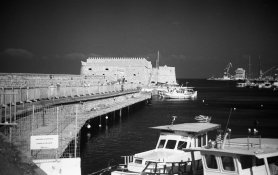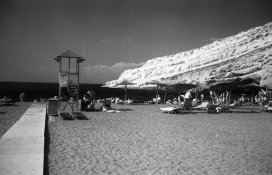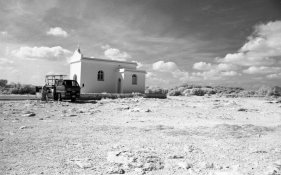My examples were developed in replenished X-Tol.
You are using an out of date browser. It may not display this or other websites correctly.
You should upgrade or use an alternative browser.
You should upgrade or use an alternative browser.
Choices for IR film?
-
A
- Thread starter ColdEye
- Start date
Recent Classifieds
-
Want to Buy Wanted- Hasselblad 50mm c
- Started by eli griggs
-
Want to Buy Fuji GX680 III Kit
- Started by Christopherjs
-
Want to Buy Mamiya 645 Pro Kit w Sekor 80mm 1.9
- Started by Christopherjs
-
Want to Buy Leedal II 16x20 Tray Ladder
- Started by Grayjohn900
-
For Sale Linhof Kardan Color 45S large format camera
- Started by J Durr
Forum statistics
Sirius Glass
Subscriber
The Rollei IR 400 performs much better in Xtol than it does in Rodinal. In fact, Rodinal tends to obliterate subtle highlight details when used with that film. Avoid it, if you can.
Replenished XTOL works really well.
Paul Manuell
Member
You can't see anything once the filter is attached. My shots were tripod mounted without the filter attached, then I chose my aperture, noted the metered shutter speed at that aperture, attached the filter then manually set the shutter speed 4 stops over. So what was 1/250th at f11 (the aperture I chose) without the filter, was manually set to 1/15th once the filter was attached. I then used the combination of mirror lock up and 2 second timer to take the shot. The ISO was set at box speed, ie., 200Paul what if anything could you see with a SRB IR filter on the camera and what was the best speed to use the SFX at?
Thanks
pentaxuser
- Paul Manuell
- Deleted
So Paul used an exposure 4 stops over the metered value.
My three examples used metered exposure, metered exposure plus 6 stops and metered exposure plus 9 stops.
With near IR and IR sensitive film, it is important to remember that your meter doesn't measure IR light. It measures the visible light, and you apply your experience and judgment when you estimate the correlation between available visible light and the IR that accompanies it.
In my case, my exposures were made on an overcast day in October in the northern hemisphere. In conditions like that, there is less accompanying IR than on a sunny day in the summer (for example).
My three examples used metered exposure, metered exposure plus 6 stops and metered exposure plus 9 stops.
With near IR and IR sensitive film, it is important to remember that your meter doesn't measure IR light. It measures the visible light, and you apply your experience and judgment when you estimate the correlation between available visible light and the IR that accompanies it.
In my case, my exposures were made on an overcast day in October in the northern hemisphere. In conditions like that, there is less accompanying IR than on a sunny day in the summer (for example).
abruzzi
Member
I've been using Rollei Retro 400S as infrared film. I've heard (but can't really say with authority) that it is the same film stock as IR400, and 400S is noticeably cheaper than IR400. I shoot it in my retina with an R72 filter. The main negative (IMO) is the base it on. Its very thin and tends to curve longways.
Paul Manuell
Member
Can you post some photo examples, please, of the Retro 400S shot with the infrared filter.I've been using Rollei Retro 400S as infrared film. I've heard (but can't really say with authority) that it is the same film stock as IR400, and 400S is noticeably cheaper than IR400. I shoot it in my retina with an R72 filter. The main negative (IMO) is the base it on. Its very thin and tends to curve longways.
Paul Manuell
Member
Thank you, that's very interesting and informative, the fact you overexposed more in less sunny conditions.So Paul used an exposure 4 stops over the metered value.
My three examples used metered exposure, metered exposure plus 6 stops and metered exposure plus 9 stops.
With near IR and IR sensitive film, it is important to remember that your meter doesn't measure IR light. It measures the visible light, and you apply your experience and judgment when you estimate the correlation between available visible light and the IR that accompanies it.
In my case, my exposures were made on an overcast day in October in the northern hemisphere. In conditions like that, there is less accompanying IR than on a sunny day in the summer (for example).
pentaxuser
Member
Thanks for the very full explanation, Paul. I thought I had seen a post (not on this thread) that suggested that with the R72 you could just about make out enough through to establish what the edges of the scene was but not of course the normal details that other filters allow you to see. This might make handheld shots with a wide angled lens possible once you had established without the R72 what edges you need in your sceneYou can't see anything once the filter is attached. My shots were tripod mounted without the filter attached, then I chose my aperture, noted the metered shutter speed at that aperture, attached the filter then manually set the shutter speed 4 stops over. So what was 1/250th at f11 (the aperture I chose) without the filter, was manually set to 1/15th once the filter was attached. I then used the combination of mirror lock up and 2 second timer to take the shot. The ISO was set at box speed, ie., 200
However this sounds like a forlorn hope
pentaxuser
Thread please!Here is a thread
DWThomas
Subscriber
Ah, this is where my Yashica TLR caused a lightbulb to pop on -- a separate path for the viewfinder sure beats screwing filters on and off the Bronica!Thanks for the very full explanation, Paul. I thought I had seen a post (not on this thread) that suggested that with the R72 you could just about make out enough through to establish what the edges of the scene was but not of course the normal details that other filters allow you to see. This might make handheld shots with a wide angled lens possible once you had established without the R72 what edges you need in your scene
However this sounds like a forlorn hope
pentaxuser
removedacct1
Member
Ah, this is where my Yashica TLR caused a lightbulb to pop on -- a separate path for the viewfinder sure beats screwing filters on and off the Bronica!
Indeed, the best way to shoot an IR film with an R72 filter is to use a TLR: the opaque filter doesn't obscure the viewing lens.
Agulliver
Member
The meter on my Yashica Minister III (60s selenium jobby) certainly doesn't respond to IR light. With the IR720 filter in place the needle doesn't swing at all.
However with my Praktica BX20S bodies, if I use an IR720 filter the meter definitely does see IR and sets the shutter speed approximately 6 stops slower than without the filter. Though it's difficult to be totally sure because I can't see the shutter speed etchings through the viewfinder with the filter in place!
Here are a few of mine....Crete with the Yashica and Malta with the Praktica. Focusing is easier with the Yashica as the rangefinder works with the filter in place of course. With an SLR you must either pre-focus or guess...and apertures are usually quite wide due to the low EI. Both with cheap Chinese 720 filters bought for under a tenner including postage from China via that famous auction site. As far as I can tell the film and filters do a good job, though I'm really just experimenting with this.



However with my Praktica BX20S bodies, if I use an IR720 filter the meter definitely does see IR and sets the shutter speed approximately 6 stops slower than without the filter. Though it's difficult to be totally sure because I can't see the shutter speed etchings through the viewfinder with the filter in place!
Here are a few of mine....Crete with the Yashica and Malta with the Praktica. Focusing is easier with the Yashica as the rangefinder works with the filter in place of course. With an SLR you must either pre-focus or guess...and apertures are usually quite wide due to the low EI. Both with cheap Chinese 720 filters bought for under a tenner including postage from China via that famous auction site. As far as I can tell the film and filters do a good job, though I'm really just experimenting with this.



Truzi
Member
- Joined
- Mar 18, 2012
- Messages
- 2,671
- Format
- Multi Format
LOL. Sorry, I was too busy checking to make sure the links in the thread still worked that I forgot to post the thread itself.Thread please!
https://www.photrio.com/forum/threads/exposure-correction-for-hoya-720.147639/
https://www.photrio.com/forum/threads/advice-for-first-time-near-ir.115386/
abruzzi
Member
You are welcome.Thank you, that's very interesting and informative, the fact you overexposed more in less sunny conditions.
I prefer not to refer to it as "over-exposure" but rather "informed guess increased exposure"
 .
.I would stress though - your meter doesn't tell you everything you need to know. You may need to add either more or less further compensation based on a bunch of factors like latitude, time of day, time of year, ambient temperature and maybe even humidity.
pbromaghin
Subscriber
In my case, my exposures were made on an overcast day in October in the northern hemisphere. In conditions like that, there is less accompanying IR than on a sunny day in the summer (for example).
Matt, is it the case that at higher altitude, like here in Colorado, there would also be less IR, so further adjustment would be needed?
I don't know - I spend a lot of time at or near sea level.Matt, is it the case that at higher altitude, like here in Colorado, there would also be less IR, so further adjustment would be needed?
Are there any high altitude IR photographers here who have some experience they can share?
abruzzi
Member
The shots I posted above were 4000-6000ft elevation, and I used an uncovered meter set to ISO 12. I doubt that's much different than sea level.
pbromaghin
Subscriber
Good to know. Thank you!
Paul Manuell
Member
I concede that you MIGHT be able to make out something through the viewfinder with the filter attached, but only on a sunny day with areas of contrasting light and dark, and by giving your eyes time to adjust, but I personally wouldn't choose to shoot hand held with this filter attached.Thanks for the very full explanation, Paul. I thought I had seen a post (not on this thread) that suggested that with the R72 you could just about make out enough through to establish what the edges of the scene was but not of course the normal details that other filters allow you to see. This might make handheld shots with a wide angled lens possible once you had established without the R72 what edges you need in your scene
However this sounds like a forlorn hope
pentaxuser
Paul Manuell
Member
Thanks. Those first 2 definitely have an infrared look to them.
Sirius Glass
Subscriber
I like these reviews:
https://www.digitaltruth.com/products/product_tests/infrared_film_004.php
https://www.digitaltruth.com/products/product_tests/infrared_film_004-2.php
https://www.digitaltruth.com/products/product_tests/infrared_film_005.php
https://www.digitaltruth.com/products/product_tests/infrared_film_010.php
https://www.digitaltruth.com/products/product_tests/infrared_film_004.php
https://www.digitaltruth.com/products/product_tests/infrared_film_004-2.php
https://www.digitaltruth.com/products/product_tests/infrared_film_005.php
https://www.digitaltruth.com/products/product_tests/infrared_film_010.php
UV light is most attenuated by the atmosphere, red and IR light less so. Infrared light is less absorbed or scattered by air and haze than blue or UV light are. This means that landscapes taken with red or IR light suffer less attenuation of distant objects, and can have an appearance of extreme depth because objects near the horizon are clear.
At higher elevation, especially when it's clear, there is more UV light than at low elevation. There's more of _everything_ including IR, but the effect is strongest in the blue/UV. This could cause light meters to read brighter, but most light meters are probably filtered to some degree to roughly match the wavelength sensitivity of regular panchro film. (Ordinary glass blocks a fair amount of UV.) However, there's no guarantee that the reddest part of the meter sensitivity matches the reddest part of the IR film's sensitivity, in fact it almost surely doesn't. So it's always going to be better to take an unfiltered meter reading and use a filter factor (or rescale the ISO). All IR filter factors are a bit of a guess or require calibration. IME the exposure is more dependent on the clarity of the day (best with lower clouds and humidity) and the pictorial effect you are trying to achieve, more so than on altitude.
At higher elevation, especially when it's clear, there is more UV light than at low elevation. There's more of _everything_ including IR, but the effect is strongest in the blue/UV. This could cause light meters to read brighter, but most light meters are probably filtered to some degree to roughly match the wavelength sensitivity of regular panchro film. (Ordinary glass blocks a fair amount of UV.) However, there's no guarantee that the reddest part of the meter sensitivity matches the reddest part of the IR film's sensitivity, in fact it almost surely doesn't. So it's always going to be better to take an unfiltered meter reading and use a filter factor (or rescale the ISO). All IR filter factors are a bit of a guess or require calibration. IME the exposure is more dependent on the clarity of the day (best with lower clouds and humidity) and the pictorial effect you are trying to achieve, more so than on altitude.
abruzzi
Member
Thanks. Those first 2 definitely have an infrared look to them.
the third one too, if you know what you're looking at. That was a test to see is dark green spiky cacti, reflect a lot of IR, which apparently they do, hence the bright white cactus spikes. I don't like in an area with lots of deciduous trees, so the traditional scenery for the Wood effect isn't really available around here.
| Photrio.com contains affiliate links to products. We may receive a commission for purchases made through these links. To read our full affiliate disclosure statement please click Here. |
PHOTRIO PARTNERS EQUALLY FUNDING OUR COMMUNITY:  |







